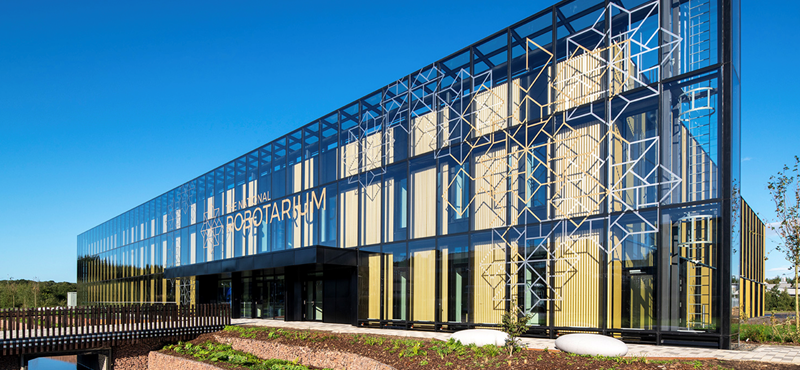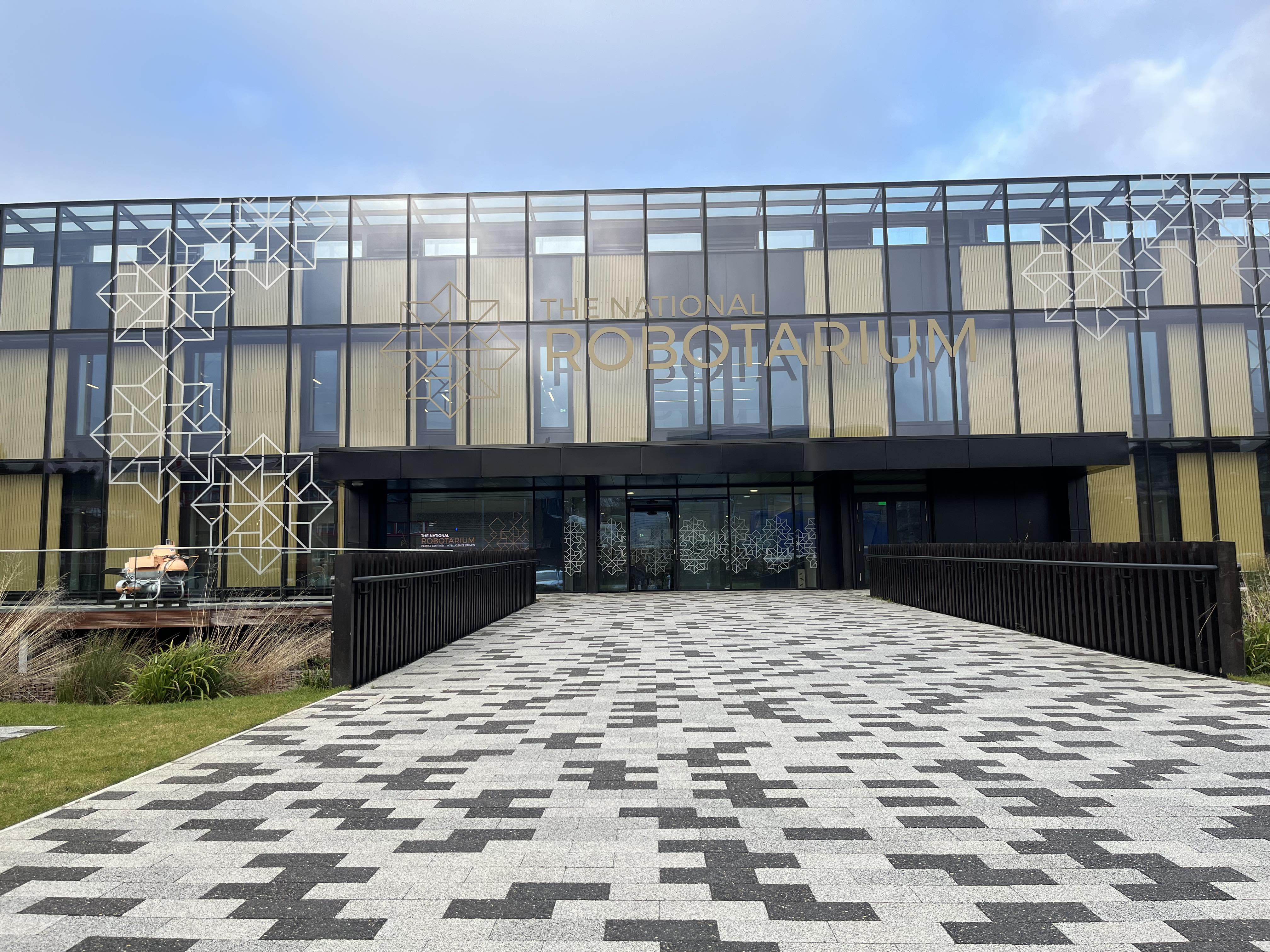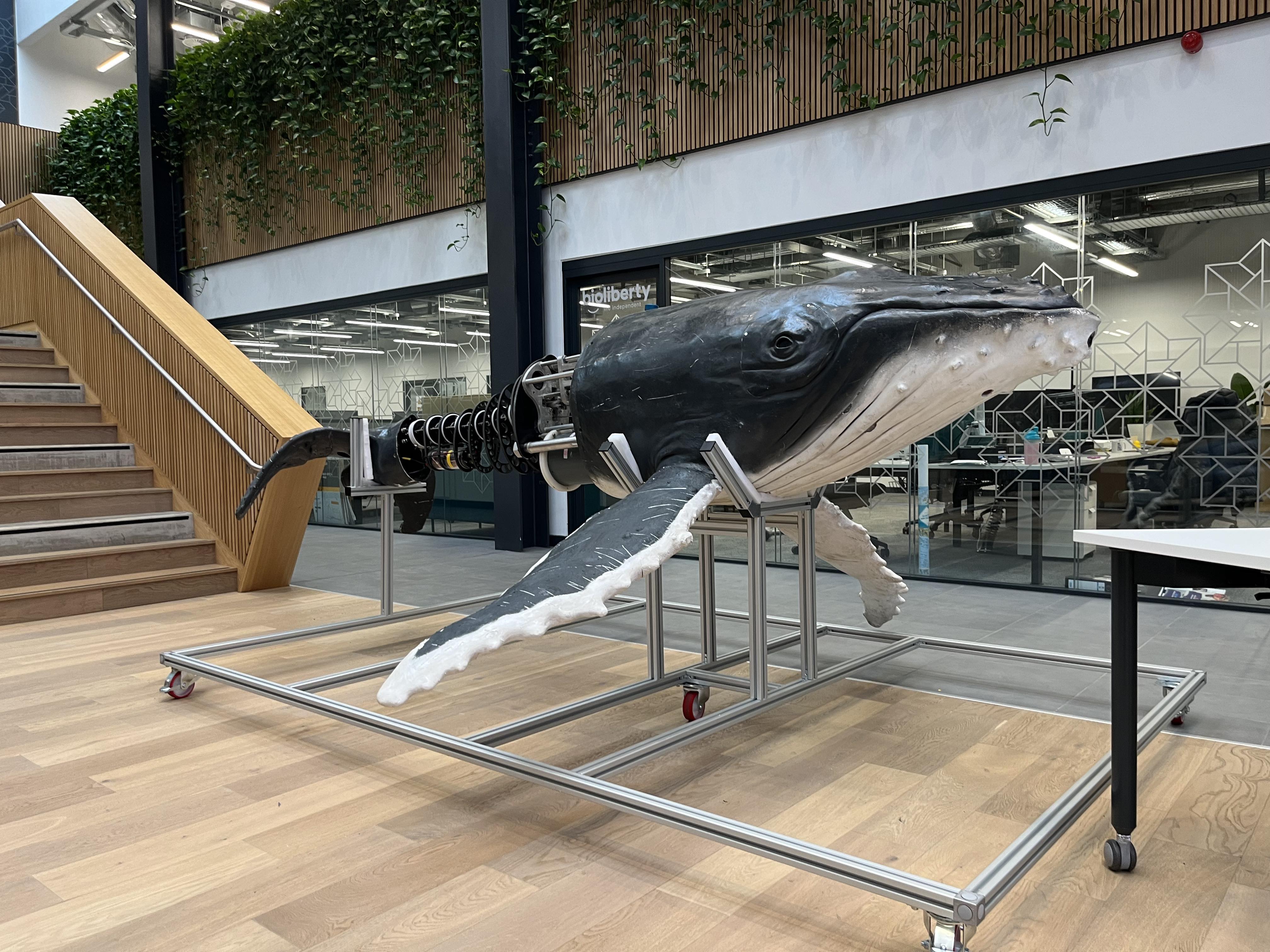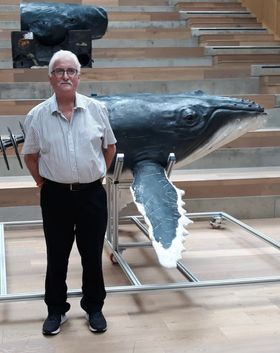Accessibility at The National Robotarium at Heriot-Watt

George Guy recently visited The National Robotarium, a new centre for Robotics and Artificial Intelligence at Heriot-Watt. In this guest blog post, George tells us about his experience of disabled access at the university’s new building.

Recently, I and a few others from the PPI group attended a meeting at Heriot-Watt University’s National Robotarium. It’s a brand-new building so I took wheelchair accessibility for granted. To be on the safe side I checked ahead and was reassured, I was told it had recently passed an accessibility test with flying colours!
I am fairly recently disabled, and it’s been a real eye-opener for me. Things I used to take for granted as an able-bodied person now stand out wherever I go, and most organisations simply take part in a box-ticking exercise to get their accessibility certificate.
Steps are a no-go for me, and manual doors are a nightmare. I also have Osteoporosis in my lower spine so a simple high threshold bar causes me a lot of pain. Drop kerbs are frequently poorly maintained and not always where they’re needed.
During the course of the event, I had to use the toilet facilities and found the accessibility was a challenge. I was unable to open the access door to the facilities which left me having to request help from other people, which isn’t always possible or ideal. When these situations arise, the disabled person is left not only in great difficulty but feeling a loss of independence and dignity.A few days later I completed a feedback form where I pinpointed the lack of accessibility in certain areas. Sadly, I’ve had cause to complain about similar problems in the past and normally the response is very generic, referring to the ‘rules’ around accessibility.
On this occasion, I was incredibly gratified when the facilities manager responded straight away, and I was invited to visit him and explain exactly where the issues were. He recognised the problems and said he would do his best to rectify them. Again, although I was pleased he reacted so quickly, I didn’t expect anything to happen.
However, within a few days, an email arrived to say that the work suggested had been ordered and signed off as we’d discussed, with extra layers to ensure that accessibility was checked regularly.It’s quite remarkable that an organisation as large as this can react quickly to feedback. Other organisations, such as hotels, could certainly learn lessons from Heriot Watt in this regard. In my view, it seems that disabled people using their facilities aren’t listened to and that there is a generic checklist for all buildings which may not be suitable for all building types.
It’s always easy to complain when people get things wrong, but I think it’s just as important to speak out when they get it right. Thank you, Heriot-Watt, for what you’ve done for me and others like me. I’m proud to get to know you and look forward to seeing you again soon.


Feature / cover image courtesy of Heriott Watt University.
Main photos by Euan's Guide.
Photo of George courtesy of George Guy.


 Follow Euan's Guide on Instagram
Follow Euan's Guide on Instagram
 Follow Euan's Guide on LinkedIn
Follow Euan's Guide on LinkedIn
 Follow Euan's Guide on Facebook
Follow Euan's Guide on Facebook


Comments
You have to be signed in to leave a comment.
Login / Signup